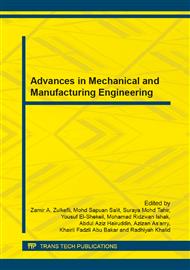p.228
p.234
p.240
p.245
p.250
p.256
p.263
p.269
p.275
Monitoring of Selected Indoor Air Quality Parameters and Cooling Energy Usage in Hotel Restaurant Malaysia
Abstract:
Sensible (temperature) and latent (moisture) loads are the common load an air-conditioning (AC) system need to handle. Both loads are generated from conditioned space, internal source and outdoor air ventilation. This study is to monitor the indoor air quality IAQ in hotel restaurant and the results are compared with Malaysian standard MS1525 and Industry Code of Practice (COP) on IAQ 2010, Department of Safety and Health (DOSH) Malaysia. The AC system performance was also monitored to identify the actual cooling energy usage base on standard operations. Psychrometric chart was used to analyse the actual cooling energy required and identified the latent and sensible loads significantly. The result of the study shows the mean air temperature, relative humidity (RH), carbon dioxide (CO) and carbon monoxide (CO2) levels were within range as stipulated by standard and code of practice. Heat loads analysis on a psychrometric chart showed the total cooling energy as 296.2 kW; of which 196.3 kW was contributed to primary air unit (PAU) and 99.9 kW to air handling unit (AHU) respectively. The primary contribution for sensible and latent loads and recommendation of potential energy saving also been discussed to meet energy efficient in AC system while maintaining good indoor air quality in the restaurant.
Info:
Periodical:
Pages:
250-255
Citation:
Online since:
June 2014
Keywords:
Price:
Сopyright:
© 2014 Trans Tech Publications Ltd. All Rights Reserved
Share:
Citation:


